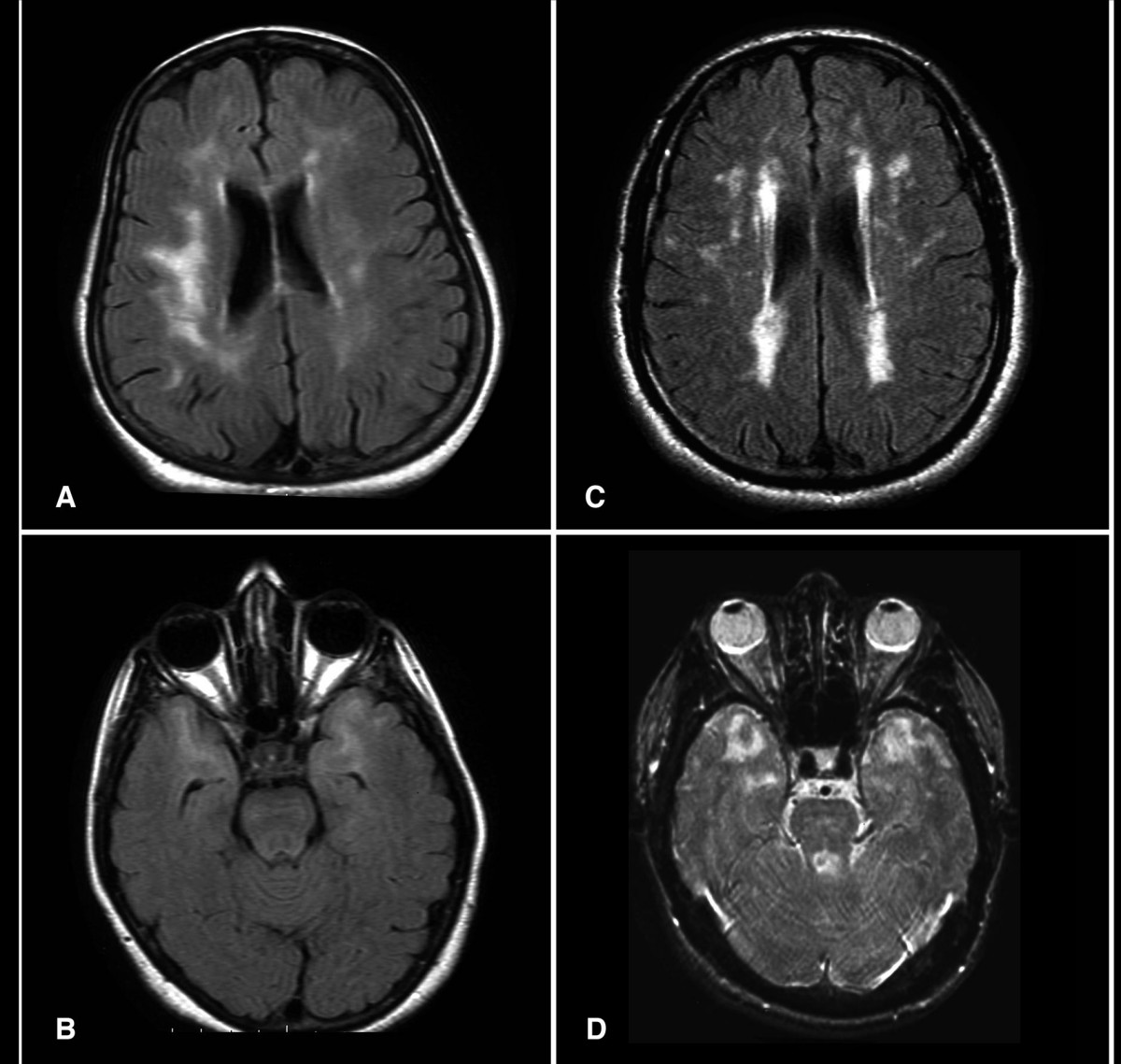Cerebral Autosomal Dominant Arteriopathy-Subcortical Infarcts-Leukoencephalopathy

CADASIL (Cerebral Autosomal Dominant Arteriopathy with Subcortical Infarcts and Leukoencephalopathy) is a hereditary cerebrovascular disorder characterized by mid-adult onset of recurrent subcortical ischemic stroke and cognitive impairment progressing to dementia in addition to migraines with aura and mood disturbances seen in about a third of patients.
Epidemiology
In Europe, the prevalence of CADASIL has been estimated to range between 1/50 000- 1/25 000.
Clinical description
The first manifestation of the disease occurs at a mean age of 45-50, usually in the form of ischemic stroke or cognitive decline. The disease onset and course is variable, but more than two thirds of patients suffer from (recurrent) stroke or dementia. Migraine, usually with aura, occurs in about a third of patients and often precedes stroke and dementia symptoms, with a mean age of onset of about 30 years. Psychiatric disorders are also common and include depression, apathy and personality changes. Less common signs include reversible acute encephalopathy (accompanied by headache, confusion, and seizures), epilepsy and subclinical peripheral neuropathy. The most common cause of death is pneumonia, followed by sudden unexpected death and asphyxia.
Etiology
CADASIL is caused by mutations in the NOTCH3 gene (>95% of cases), located to 19p13.2-p13.1, which encodes transmembrane receptor NOTCH3, mainly expressed in vascular smooth muscle cells. More than 90% are missense mutations which lead to a numerical cysteine alteration in one of the epidermal growth factor receptor (EGFR) encoding exons of NOTCH3 (exons 2-23). The mutated EGFR contains 5 or 7 cysteine residues, rather than the usual 6. This leads to increased multimerisation of the mutated protein and accumulation of mutated NOTCH3 in the vascular wall.
Diagnostic methods
The diagnosis of CADASIL should be considered in patients with young onset stroke or cognitive decline, ischemic changes on MRI (such as symmetrical white matter hyperintensities, subcortical infarctions, microbleeds) and a positive family history for stroke or dementia. Diagnosis can be confirmed through molecular analysis, by the identification of a typical cysteine altering NOTCH3 mutation. Alternatively, electron microscopy of a skin biopsy can be used to reveal characteristic granular deposits in the vessel wall, or immunohistochemical analysis can show positive NOTCH3 staining of the vessel wall.
Differential diagnosis
Differential diagnoses include Binswanger disease, primary angiitis of the central nervous system and multiple sclerosis as well as other genetic disorders such as CARASIL, MELAS syndrome, Fabry disease and small-vessel diseases associated with COL4A1 mutations (e.g. familial porencephaly) (see these terms).
Antenatal diagnosis
Antenatal diagnosis and pre-implantation genetic diagnosis is possible if a disease-causing mutation in the family is known.
Genetic counseling
Due to the autosomal dominant inheritance and the generally severe progression, patients and family members should always be offered genetic counseling.
Management and treatment
There is no cure for CADASIL. Antiplatelet therapy is often used but it has not yet been proven as an effective treatment. Symptomatic treatment can be offered to patients to treat migraines and potential concomitant vascular risk factors (hypertension, hypercholesterolemia and diabetes). Psychological counseling should be offered to patients and their families in order to give them emotional support. Smoking, angiography, anticoagulants and thrombolytic therapy are all to be avoided by those with CADASIL as they increase the risk of cerebrovascular manifestations.
Prognosis
The prognosis is poor with most patients eventually becoming bed-ridden and dement and requiring constant nursing care. The median age at death is 68 years.